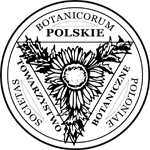Protein hydrolysate as a component of salinized soil in the cultivation of Ageratum houstonianum Mill. (Asteraceae)
Abstract
Keywords
Full Text:
PDFReferences
Parida AK, Das AB. Salt tolerance and salinity effects on plants: a review. Ecotoxicol Environ Saf. 2005;60:324–349. http://dx.doi.org/10.1016/j.ecoenv.2004.06.010
Zhu JK. Plant salt tolerance. Trends Plant Sci. 2001;6:66–71. http://dx.doi.org/10.1016/S1360-1385(00)01838-0
Yadav S, Ifran M, Ahmad A, Hayat S. Causes of salinity and plant manifestation to salt stress: a review. J. Environ Biol. 2011;32:667–685.
Hussain TM, Chandrasekhar T, Hazara M, Sultan Z, Saleh BK, Gopal GR. Recent advances in salt stress biology – a review. Biotechnol Mol Biol Rev. 2008;3:8–13.
Parvaiz A, Satyawati S. Salt stress and phyto-biochemical responses of plants – a review. Plant Soil Environ. 2008;54:89–99.
Bañón S, Miralles J, Ochoa J, Sánchez-Blanco MJ. The effect of salinity and high boron on growth, photosynthetic activity and mineral contents of two ornamental shrubs. Hortic Sci. 2012;39(3):188–194.
Ligorio AM, Ferrara M, Nigro F, Ippolito A. Evaluation of activity of liquid organic fertilizers, Hemozym NK4.5-6 and Hemozym BIO N5, on the growth of biocontrol agents. J Plant Pathol. 2011;93(4 suppl):S4.25–S4.62.
Comia RA. Efficacy test for Hemozym 4.5-0-6 as fertilizer for banana (Musa sapientum cv. Lakatan) [Internet]. 2011 [cited yyyy mmm dd]; Available from: http://agro.farpro.it/layout/upload/Prova_Sperimentazione_Banana.pdf
Comia RA. Efficacy test for Hemozym BIO N5 as fertilizer for pechay (Brassica rapa) [Internet]. 2012 [cited yyyy mmm dd]; Available from: http://agro.farpro.it/layout/upload/Pechay_plant_Test.pdf
Lichtenthaler HK, Wellburn AR. Determination of total carotenoids and chlorophyll a and b of leaf extracts in different solvents. Biochem Soc Trans. 1983;603:591–592. http://dx.doi.org/10.1042/bst0110591
Rehman AR, Riaz R, Iqbal M, Shafi J, Ahmad W. Responses of different morphological attribute of Rosa hybrida L. cv. Kardinal to saline water irrigation. Environ Ecol Res. 2014;2(1):21–26.
Liu FY, Li KT, Yang WJ. Differential response to short-term salinity stress of heat-tolerant cherry tomato cultivars grown at high temperatures. Hortic Environ Biotechnol. 2014;55(2):79–90. http://dx.doi.org/10.1007/s13580-014-0127-1
Läuchli A, Lüttge U, editors. Salinity: environment – plants – molecules. Dordrecht: Springer Kluwer Academic Publishers; 2007. http://dx.doi.org/10.1007/0-306-48155-3
Munns R, Tester M. Mechanisms of salinity tolerance. Annu Rev Plant Biol. 2008;59:651–681. http://dx.doi.org/10.1146/annurev.arplant.59.032607.092911
Deinlein U, Stephan AB, Horie T, Luo W, Xu G, Schroeder JI. Plant salt-tolerance mechanisms. Trends Plant Sci. 2014;19(6):371–379. http://dx.doi.org/10.1016/j.tplants.2014.02.001
Gupta B, Huang B. Mechanism of salinity tolerance in plants: physiological, biochemical, and molecular characterization. Int J Genomics. 2014;2014:701596. http://dx.doi.org/10.1155/2014/701596
Chaparzadech N, D’Amico ML, Khavari-Nejad RA, Izzo R, Navari-Izzo F. Antioxidative responses of Calendula officinalis under salinity conditions. Plant Physiol Bioch. 2004;42(9):695–701. http://dx.doi.org/10.1016/j.plaphy.2004.07.001
Cornish K, King AI, Reid MS, Paul JL. Role of ABA in stress induced water loss from potted chrysanthemum plants. Acta Hortic. 1985;167:381–386. http://dx.doi.org/10.17660/ActaHortic.1985.167.41
Kotuby-Amacher J, Koenig K, Kitchen B. Salinity and plant tolerance [Internet]. 2000 [cited yyyy mmm dd]; Available from: https://extension.usu.edu/files/publications/publication/AG-SO-03.pdf
Miyamoto S. Salt tolerance of landscape plants common to the southwest [Internet]. 2008 [cited yyyy mmm dd]; Available from: http://riogrande.tamu.edu/reports/2008/tr316.pdf
Zuryak R, Tabbarah D, Banbukin L. Preliminary studies on the salt tolerance and sodium relations of common ornamental plants. J Plant Nutr. 1993;16:1309–1316. http://dx.doi.org/10.1080/01904169309364614
Skiminia CA. Salt tolerance of ornamentals. Combined Proceedings of the International Plant Propagators’ Society. 1980;30:113–118.
Weinhold F, Scharpf HC. Tolerance of ornamental plants to salt, sodium and chloride in potting substrates containing compost made of separately collected organic residues. Acta Hortic. 1997;450:221–228. http://dx.doi.org/10.17660/ActaHortic.1997.450.26
Jaleel CA, Sankar B, Sridharan R, Panneerselvarm R. Soil salinity alters growth, chlorophyll content, and secondary metabolite accumulation in Catharanthus roseus. Turk J Biol. 2008;32:79–83.
Parks GE, Dietrich MA, Schumaker KS. Increased vacuolar Na+/H+ exchange activity in Salicornia bigelovii Torr. in response to NaCl. J Exp Bot. 2002;53:55–65. http://dx.doi.org/10.1093/jexbot/53.371.1055
Wrochna M, Gawrońska H, Gawroński SW. Effect of salt stress on fresh and dry matter production and accumulation of Na+, K+, Ca2+, Mg2+, Cl− ions in selected species of ornamental plants. Acta Agrophys. 2006;793:755–785.
Devitt DA, Morris RL. Morphological response of flowering annuals to salinity. J Am Soc Hortic Sci. 1987;112:951–955.
Sonneveld C, Voogt W. Studies on salt tolerance of some flower crops grown under glass. Plant Soil. 1983;74:41–52. http://dx.doi.org/10.1007/BF02178738
Dartigues A. The problem of the salinity for ornamental plants grown in pots and containers: determination and interpretation. Acta Hortic. 1982;126:203–212. http://dx.doi.org/10.17660/ActaHortic.1982.126.25
Kücükahmatler O. The effect of salinity on yield and quality of ornamental plants and cut flowers. Acta Hortic. 2002;573:407–414. http://dx.doi.org/10.17660/ActaHortic.2002.573.49
Kunka M, Nowak JS. The effect of Basacote Plus on the growth and flowering of (Campanula carpatica JACQ) cultivated in pots. Zesz Probl Postępów Nauk Rol. 2009;53:413–418.
Watanabe K, Tanaka T, Hotta Y, Kuromoch H, Takeuchi I. Improving salt tolerance of cotton seedlings with 5-aminolevulinic acid. J Plant Growth Regul. 2000;32:91–104. http://dx.doi.org/10.1023/A:1006369404273
Wraga K, Dobrowolska A. The estimation of effect of Actisil on morphological traits and decorative value of seedlings two garden pansy cultivars from Fancy groups. Part I. Plants growth and leaves size. Rocz Akad Rol Pozn. 2007;383(41):229–233.
Smith GA, Witty M. Heme, chlorophyll and bilins: methods and protocols. New York, NY: Springer Verlag; 2008.
Nowak J, Kunka M. The effect of salinity, mycorrhizal inoculation and compost supply on growth and flowering of mealycup sage ‘Blue Victory’ (Salvia farinacea Benth.). Zesz Probl Postępów Nauk Roln. 2009;539:551–559.
DOI: https://doi.org/10.5586/aa.2015.028
|
|
|






